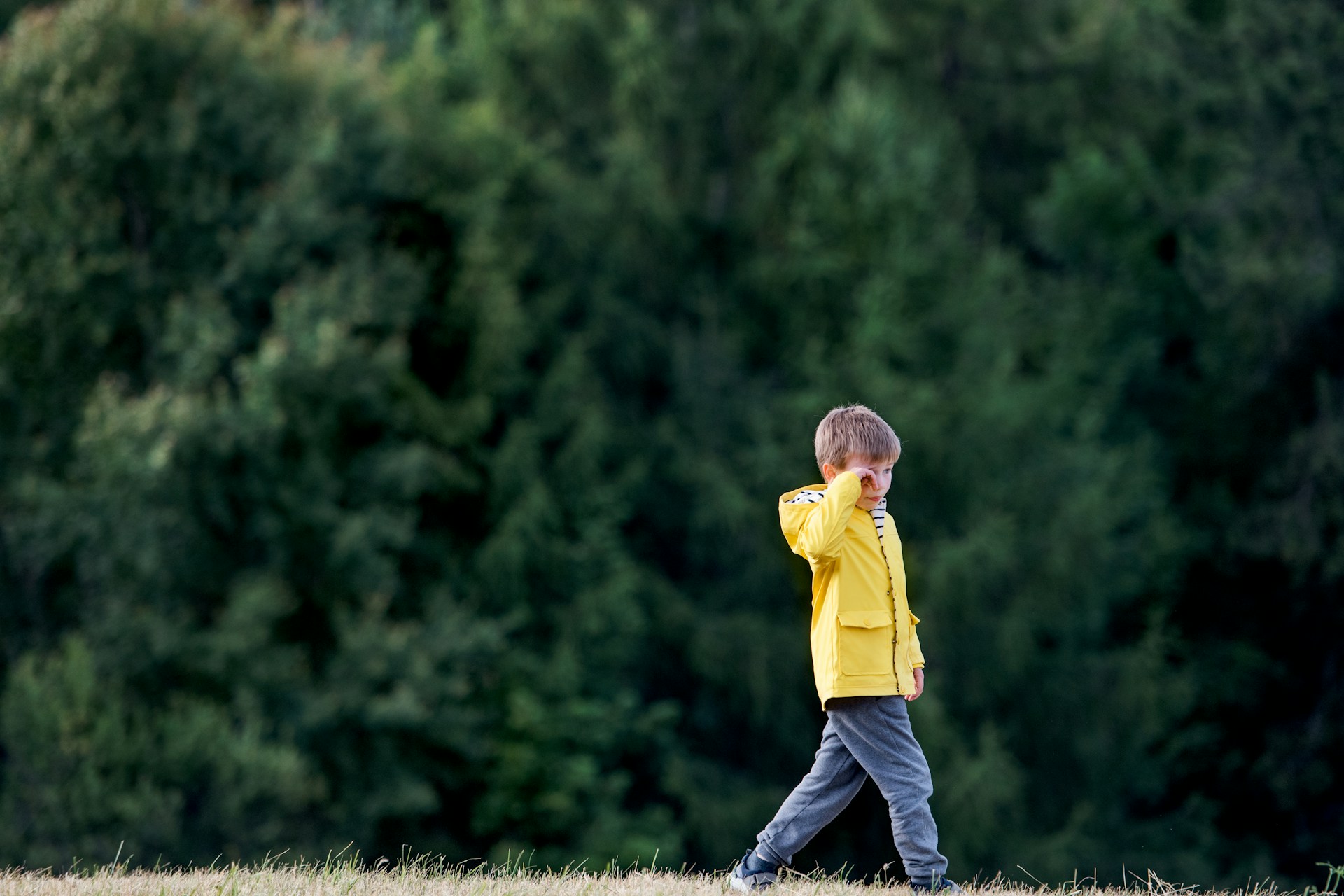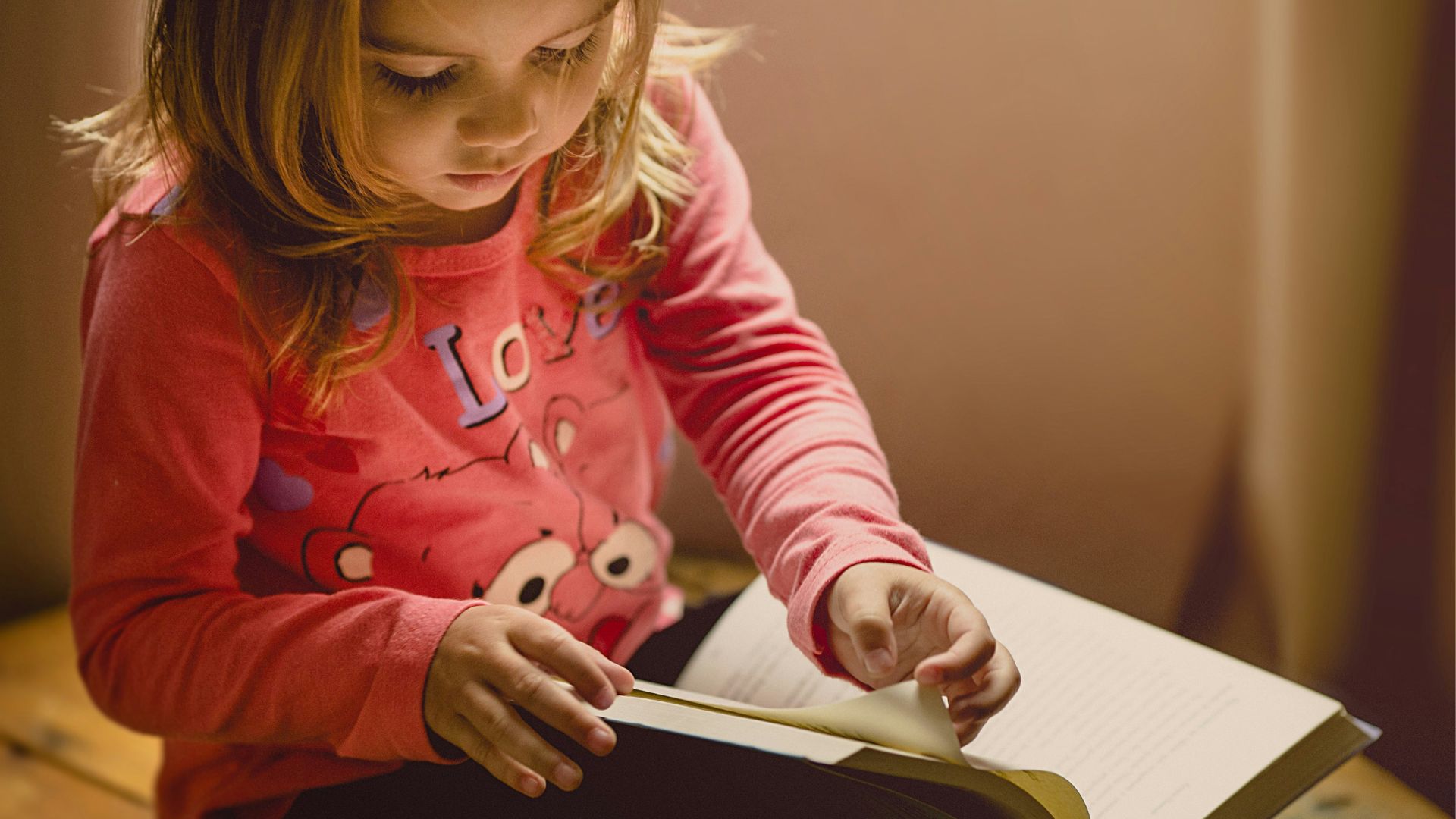
Family transitions are never easy, but the way you talk to kids about divorce or separation can profoundly shape their journey through this challenging time. These conversations often become flash-bulb memories, which are vivid moments that children carry with them for years to come.
Why This Conversation Matters
The way you break the news about divorce or separation can significantly impact your child’s adjustment process and long-term mental health. Research shows that children who receive thoughtful, age-appropriate explanations tend to adjust better than those left to fill in the blanks themselves.
A well-planned conversation offers several crucial benefits:
- Reduces anxiety by replacing uncertainty with clear information
- Strengthens trust when children see their parents handling difficult situations with care and honesty
- Provides a foundation for ongoing communication as your family navigates this transition together
The stakes are high, but with preparation and compassion, you can help your children process this change in healthy ways. Remember, it’s not just what you say but how you approach this pivotal moment that matters.
Prepare First, Together
Before you talk to kids about divorce or separation, coordination between parents is essential. Even if your relationship is strained, presenting a unified approach benefits your children immensely.
Create a checklist to guide your preparation:
- Agree on core messages you’ll both convey
- Decide who will speak first and about what
- Anticipate likely questions and prepare honest, age-appropriate responses
- Plan logistics like timing and location
- Establish boundaries about what details to share
If cooperation feels impossible, consider seeking professional help. A mediator or therapist can facilitate productive planning sessions, ensuring your children receive consistent messages despite parental tensions.
Write down key points to avoid getting sidetracked by emotions during the actual conversation. Practice what you’ll say, but stay flexible enough to respond naturally to your children’s reactions.
Pick the Right Moment and Setting
Timing and location matter more than you might realize. Children often remember exactly where they were and what surrounded them when they learned about their parents’ separation. These details become etched in memory, making thoughtful planning crucial.
Choose a neutral, private location where children feel safe—ideally your home, in a comfortable family space. Avoid their bedrooms, which should remain safe spaces untouched by difficult news. Skip restaurants or public places where emotional reactions might feel stifled.
Schedule the conversation carefully. Avoid holidays, birthdays, or the night before important events like tests or performances. This prevents these special days from becoming permanently associated with difficult news. Weekend mornings work well, providing time to process without school pressures.
Allow plenty of downtime afterward. Don’t plan activities immediately following the conversation. Children need space to absorb information and begin processing their emotions.
Present a United, Non-Blaming Message
When explaining divorce or separation to children, language choices matter immensely. Use “we” statements to demonstrate that despite relationship changes, you remain united as parents.
Keep adult details like legal proceedings, financial concerns, or relationship conflicts completely out of the conversation. Children don’t need to know who initiated the divorce or specific grievances between parents.
Frame the decision as mutual, even if it isn’t: “We’ve decided we’ll be happier living in different homes, but we’ll always work together as your parents.” This approach shields children from feeling caught between opposing sides and prevents them from developing resentment toward one parent, which could damage their relationship for years to come.
Emphasize your commitment to co-parent as a team. Explain that while your marriage is ending, your roles as parents continue unchanged. This reassurance helps children feel secure despite the uncertainty.
Core Reassurances Every Child Needs
Certain messages form the foundation of healthy adjustment when you talk to kids about divorce or separation. These reassurances should be repeated often in coming weeks and months.
“You are loved.” Both parents must express unwavering love. Children need to hear that divorce changes living arrangements, not parental love.
“This is not your fault.” Many children secretly believe they caused the separation. Address this directly: “Nothing you did, said, or thought made this happen. This is an adult decision.”
“We’ll always be your parents.” Emphasize the permanence of your parental roles. Divorce ends marriages, not parent-child relationships.
Additionally, highlight what won’t change: school, friends, extracurricular activities, relationships with extended family. These anchors provide stability amidst major changes. Be specific: “You’ll still play soccer on Saturdays with your friends” or “Grandma will still pick you up on Wednesdays.”
Tailor the Talk to Age
Children process information differently at various developmental stages. Adjust your approach accordingly when discussing separation with kids.
Toddlers and Preschoolers (2-5 years): Keep explanations concrete and brief. “Mommy and Daddy will live in different houses. You’ll have two homes where you’re loved. We’ll both take care of you just like always.” Expect to repeat this information many times as young children struggle to grasp permanence.
School-Age Kids (6-11 years): Provide simple, honest reasons without overwhelming detail. “Sometimes grown-ups realize they’re happier apart. We both love you and will take care of you.” Outline basic schedule changes and actively invite their feelings: “How do you feel about what we’ve shared?”
Tweens and Teens (12+ years): Offer more nuanced explanations while respecting their need for privacy. Acknowledge complex emotions: “We know this is really hard and might bring up lots of different feelings.” Avoid making them confidants or seeking their approval for adult decisions.
Explain What Will Change (and What Won’t)
Children crave predictability, making clear information about upcoming changes essential. Share what you know about living arrangements, visitation schedules, and altered daily routines. Be honest about uncertainties: “We’re still figuring out the exact schedule, but you’ll spend time with both of us.”
Visual aids help younger children grasp new arrangements. Create simple calendars showing which days they’ll spend where. Consider age-appropriate books about families with two homes.
Detail practical changes: “Dad will pick you up from school on Wednesdays now” or “You’ll have a bedroom at Mom’s apartment.” Balance this with stability reminders: “You’ll stay at the same school and keep all your friends.”
Invite Questions and Validate Feelings
After sharing initial information, create space for children’s responses. Normalize different reactions. Some kids have lots of questions right away. Others need time to think. Both are perfectly okay.
Practice active listening without rushing to fix or minimize emotions. If a child says, “I hate this,” respond with validation: “It makes sense that you’re angry. This is a big change.” Resist lecturing about acceptance or moving forward too quickly.
Model healthy emotional expression by acknowledging your own feelings appropriately: “We’re sad about this change too, but we know our family will find new ways to be happy.” However, avoid making children emotional caretakers by oversharing your distress. While it’s healthy for children to see that parents have feelings too, they should never feel responsible for managing or fixing your emotions. Keep your emotional expression balanced and age-appropriate, saving deeper processing for adult friends, family members, or therapists.

Monitor Reactions and Offer Ongoing Support
Initial reactions when you explain divorce to children rarely tell the whole story. Some children appear unaffected initially, only to struggle weeks later. Others show immediate distress that gradually eases.
Watch for typical adjustment behaviours: temporary sleep disruptions, mild appetite changes, or increased clinginess. These often resolve with consistent support and routine.
However, certain signs warrant professional attention:
- Persistent sleep or eating problems lasting over a month
- Aggressive behaviour or prolonged withdrawal
- Academic performance declining significantly
- Expressions of self-harm or persistent hopelessness
Encourage children to build support networks beyond immediate family. Encourage relationships with trusted relatives, school counsellors, or therapists who can provide additional stability. Many children benefit from knowing multiple adults care about their wellbeing. This extended support network helps them feel less isolated and provides different perspectives and outlets for their emotions. When children know they have several trusted adults to turn to, they’re more likely to reach out when struggling rather than keeping difficult feelings bottled up inside.
Shield Kids from Adult Conflict
Protecting children from parental conflict ranks among the most important factors in healthy adjustment. Never use children as messengers, spies, or sounding boards for adult frustrations. Even seemingly innocent requests like “ask your mother about the weekend schedule” or “tell your dad I need the check” place unfair burdens on children and pull them into adult conflicts.
Keep financial discussions, legal proceedings, and relationship grievances completely private. Even when you think children aren’t listening, they often absorb more than you realize. Those overheard phone calls, hushed conversations, and tense exchanges leave lasting impressions that can fuel anxiety and confusion about their family’s future.
Research shows that exposure to ongoing parental conflict worsens children’s adjustment outcomes more than the divorce itself. When children witness respectful co-parenting despite relationship challenges, they learn valuable lessons about handling difficult situations maturely.
Keep Routines and Co-Parenting Consistency
As mentioned earlier, children need predictability, so keeping familiar routines becomes especially important during family transitions. Align household rules, homework expectations, and bedtimes across both homes whenever possible.
Share important information regularly. Both parents should know about school events, medical appointments, and social developments. Attend significant events together when you can do so peacefully—seeing parents cooperate at school plays or sports games reassures children.
Use shared digital calendars or co-parenting apps to coordinate schedules and share updates. This reduces miscommunication and demonstrates collaborative parenting despite living separately.
When to Seek Professional Help
While many children adjust well with parental support, some benefit from professional intervention. Consider therapy if you notice:
- Persistent anxiety or depression symptoms
- Academic performance sliding consistently
- Social withdrawal from friends and activities
- Behavioural problems escalating at home or school
- Any mention of self-harm or suicidal thoughts
Beyond addressing specific concerns, parents should consider professional support throughout the entire process of discussing divorce or separation with children. Having ongoing coaching helps you navigate difficult conversations, manage your own emotions, and respond effectively to your children’s changing needs. Think of it as preventive care—regular guidance from a therapist or counsellor equips you to handle each stage more confidently and create stability during this transition.
Various therapy approaches help children process divorce. Play therapy allows younger children to express emotions through activities. Family counselling can improve communication patterns and help establish healthy new dynamics.
Toronto Family Therapy & Mediation offers specialized support for families navigating separation and divorce, including child therapy, family counselling, and mediation services tailored to your family’s unique needs.
Key Takeaways
Successfully talking to kids about divorce or separation rests on three essential pillars:
Prepare together: Even when challenging, coordinate your approach to provide consistent messages and reduce children’s confusion.
Reassure consistently: Repeat core messages about love, blamelessness, and stability. Children need these affirmations throughout the adjustment process, not just during initial conversations.
Keep communication open: Create ongoing opportunities for questions and emotional expression. Adjustment happens gradually, requiring patience and continued availability.
Remember, families can thrive in new configurations. While this conversation marks a difficult transition, it also begins your journey toward establishing healthy, happy lives in your restructured family. With thoughtful communication and steadfast support, children can emerge resilient and secure, carrying valuable lessons about navigating life’s challenges with grace.
Your commitment to having this conversation thoughtfully already demonstrates the care that will guide your family through this transition. Trust in your ability to support your children, seek help when needed, and know that brighter days lie ahead.
FAQ: How to Talk to Kids About Divorce or Separation
Q1: What’s the best age to tell children about divorce or separation?
There’s no “perfect” age, but the approach should match your child’s developmental stage. Even toddlers need simple explanations like “Mommy and Daddy will live in different houses, but we both love you.” The key is to be honest and age-appropriate rather than waiting for an ideal time. Delaying the conversation often creates more anxiety as children sense something is wrong. Research shows that children adjust better when they receive clear, timely information rather than being left to fill in the blanks themselves.
Q2: Should both parents be present when telling kids about the divorce?
Yes, whenever possible, both parents should be present for this initial conversation. This unified approach demonstrates that despite relationship changes, you remain committed to co-parenting. It prevents children from hearing different versions of events and reduces their anxiety about choosing sides. If tensions are too high, consider working with a mediator or therapist to plan the conversation first. The goal is presenting a calm, united front that prioritizes your children’s emotional security.
Q3: What are the most important things to say when explaining divorce to children?
Three core messages are essential: “You are loved by both of us,” “This is not your fault,” and “We’ll always be your parents.” Beyond these reassurances, explain what will change (living arrangements) and what won’t (school, friends, love from both parents). Keep adult details like legal proceedings or relationship conflicts completely private. Focus on concrete information children can understand and process at their developmental level.
Q4: How do I answer when my child asks “Why are you getting divorced?”
Keep explanations simple and avoid blame. For younger children: “Sometimes grown-ups realize they’re happier living apart, but we both love you.” For older children: “We’ve tried hard to work things out, but we’ve decided we’ll be better parents living separately.” Never share specific grievances or adult relationship issues. If pressed for details, redirect to how the family will move forward positively rather than dwelling on past problems.
Q5: What are warning signs that my child needs professional help after learning about the divorce?
While some emotional reactions are normal, certain signs warrant professional support: persistent sleep or eating problems lasting over a month, significant academic decline, aggressive behaviour or social withdrawal, expressions of self-harm, or prolonged depression. Also watch for regression in younger children or substance use in teens. Early intervention through play therapy or family counselling can prevent long-term adjustment difficulties.
Q6: How can I help my child cope if my ex-partner won’t cooperate in co-parenting?
Focus on what you can control in your own home. Maintain consistent routines, rules, and emotional availability. Never speak negatively about the other parent or use your child as a messenger. Document important information in writing and use co-parenting apps when direct communication is difficult. Consider parallel parenting where you each parent independently but share essential information. Professional mediation or court-ordered parenting coordination may help establish boundaries.
Q7: Is it better to stay together “for the kids” if we’re constantly fighting?
Children in high-conflict marriages often experience more anxiety, behavioural problems, and academic difficulties than those whose parents divorce and reduce conflict. If you cannot resolve conflicts constructively, separation may actually benefit your children’s long-term emotional health. The key factor isn’t whether parents stay together or divorce, but whether children are protected from ongoing conflict and hostility.
Q8: When should you seek professional help during the divorce process?
You should consider seeking professional support throughout every stage of discussing divorce or separation with your children. This isn’t just for crisis moments; having ongoing coaching and guidance helps you navigate each conversation more effectively. A therapist or counsellor can help you prepare initial discussions, anticipate your children’s questions, manage your own emotions, and adjust your approach as your children process the changes. Many parents find that regular sessions provide invaluable support for maintaining consistent, healthy communication. Professional guidance also helps you recognize and address your children’s evolving needs, establish effective co-parenting strategies, and create stability during transition. Consider it preventive care rather than emergency intervention. The earlier you engage professional support, the better equipped you’ll be to guide your family through this challenging journey.
Please note that the information on this page is for educational purposes, not a substitute for professional diagnosis.















